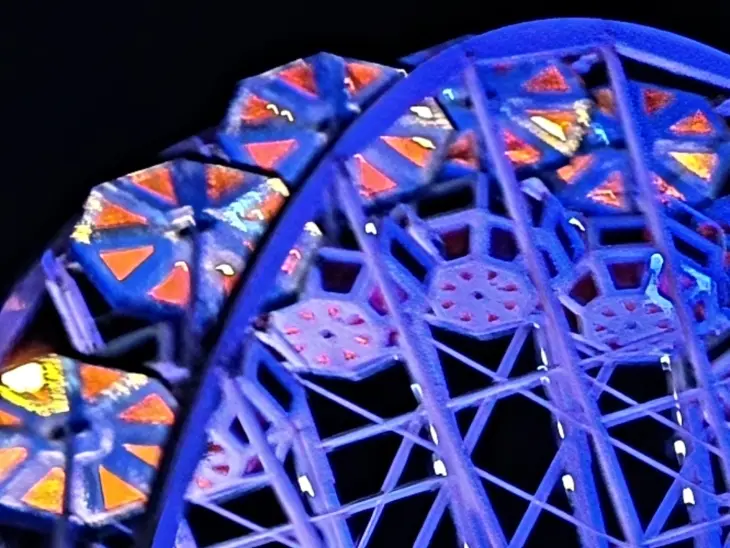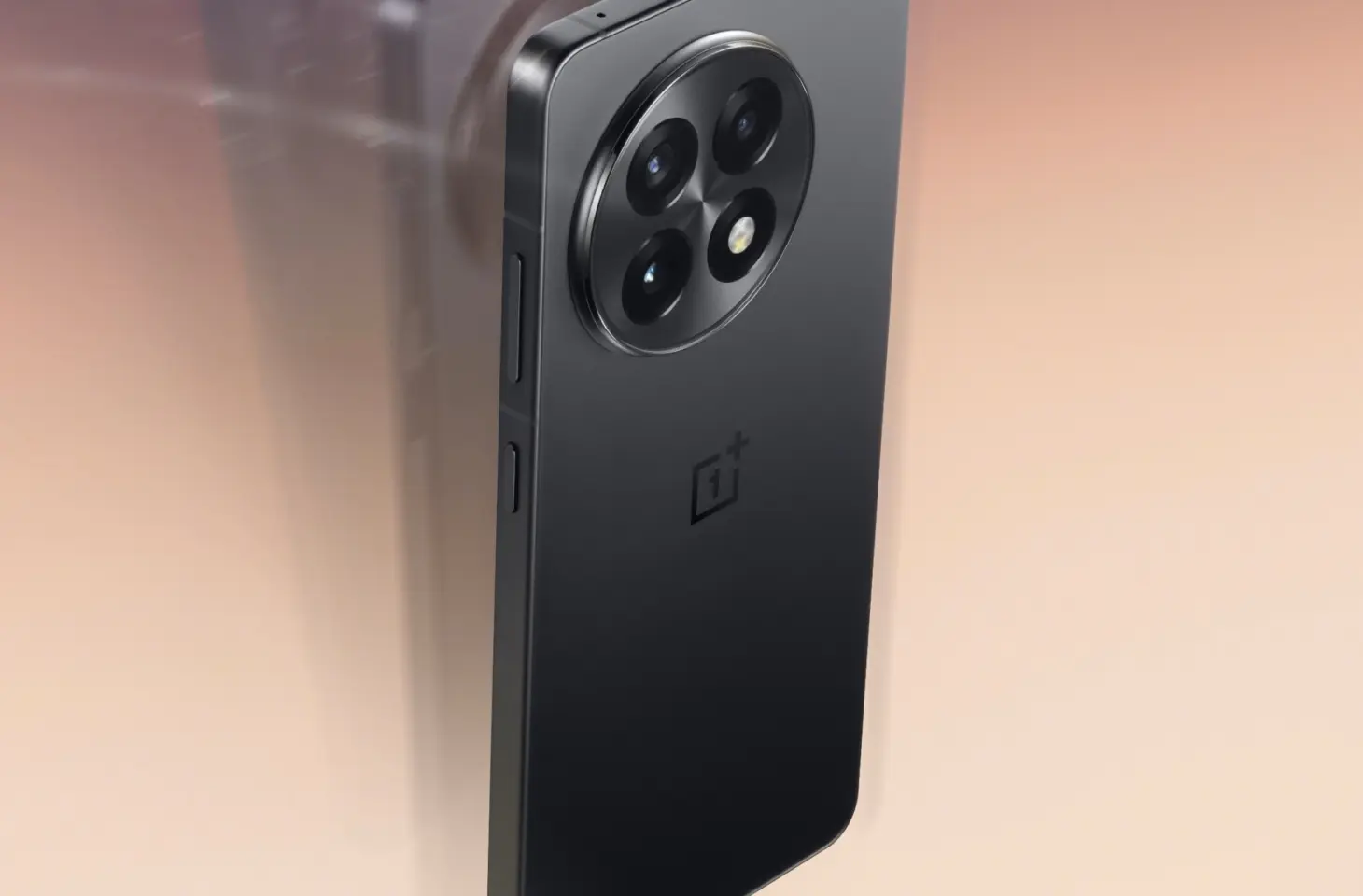The OnePlus 13R feels comfortable in the shadow of the OnePlus 13, adopting some interesting features, such as the large battery, with minor concessions here and there.
Since last year, OnePlus has accompanied its flagship phone with a cheaper version, and so it did this year with the OnePlus 13R. The term “cheap” deserves a caveat, because with a price tag of 749 euros (incl. VAT), this device boxes in a higher class than the brand’s Nord series. So the OnePlus 13R is not a full flagship like the OnePlus 13, but calling it a budget phone would dishonor it.
read also
OnePlus 13 review: thirteen is a lucky number
Black and white
OnePlus likes creative designs, but with the 13R it is keeping itself bashful. The device appears in a white and black finish without many bells and whistles. The ring-shaped camera island and the presence of the notification slider remind you that this device is akin to the OnePlus 13.
With a back made out of Corning Gorilla Glass 7i, you don’t have to worry about the sturdiness of the device. The IP65 rating indicates that it would not be wise to hold this device under a faucet or dump it into a swimming pool, which with the OnePlus 13 should be basically non-fatal.
Screen
The OnePlus 13R scores with its screen. Fans of phones with large screens need not fear that the device will be too small: the screen measures 6.78 inches. The thin frame ensures that it sits well in your hands. The resolution is 1,264 x 2,780, which is as high as the screen of the four hundred euro more expensive Oppo Find X8 Pro.
The OnePlus 13R features some handy tricks to keep the image sharp and responsive in different weather conditions. The high brightness of 1,280 nits keeps it readable in sunlight. AquaTouch allows you to use the screen when a few raindrops hit. The device also supports Glove Mode to operate the device with gloves on, but that only works with thin gloves.
Both devices have the same ultrasonic fingerprint scanner under the display. Only when you’ve used the OnePlus 13R and then go back to a device with a classic optical sensor will you feel the difference. An optical sensor takes one more attempt to read your fingerprint.
No performance bomb
The differences between the OnePlus 13 and 13R are more visible on the inside than the outside. The OnePlus 13R features the Qualcomm Snapdragon 8 Gen 3. Last year, that was the best smartphone processor, but a new and higher-performance generation has since appeared with the Snapdragon X Elite.
A direct comparison illustrates this. In terms of absolute computing power, the OnePlus 13R is no match for the OnePlus 13 and Samsung Galaxy S25 equipped with the new processor. A fairer comparison serves up with the Xiaomi 14T Pro, which comes with a MediaTek Dimensity 9400+.


The OnePlus 13 and Xiaomi 14T are each other’s equals, both CPU and GPU. Simulating on practical applications, the OnePlus 13R still lets itself down a bit. Numbers don’t lie, but they also don’t tell you everything. In the end, it’s all about how a phone performs on a day-to-day basis, and that’s where the OnePlus 13R doesn’t come up short. The device is amply endowed with RAM memory (12 GB) to juggle multiple applications.

Indefatigable battery
OnePlus has not yet laid its trump card. Both OnePlus 13 devices have a hefty battery capacity of 6,000 mAh. In practice, that capacity is split between two batteries. This allows for better heat distribution during charging.
In an endurance run test, the more expensive devices all have to lose out to the OnePlus 13R, even the OnePlus 13, with the Google Pixel 9 proving to be a tough opponent.

That large battery is also quick to recharge. As we pointed out in our review of the OnePlus 13, the manufacturer doesn’t always play nice with charging standards. The advertised charging capacity of 80 W is only possible with a SuperVooc home charger. Don’t bother buying that charger extra: we still measured good charging speeds with a Power Delivery charger. The OnePlus 13R is one of the only devices in its price range that cannot charge wirelessly.

Cameras: two out of three
The cameras of the OnePlus 13 are posted in a bombastic ring. On paper, the composition is as follows: a 50 MP main camera (f/1.8), a 50 MP telephoto camera (f/2.0) and an 8 MP wide-angle camera (f/2.2). The OnePlus 13R brings significant improvements over the previous model, but don’t expect the same level of photos as what the most expensive flagship models deliver.
The main camera does little to nothing wrong. The lens is assisted by a large sensor to let in more light, allowing you to capture sharp images in different lighting conditions. The algorithms behind the camera employ a technique that captures each frame twice, with short and with longer exposures, to compose the optimal image. Every smartphone camera excels on sunny days, but the 13R still manages to produce images with detail and realistic color reproduction even after sunset.














The telephoto camera is a mixed story. The camera is capped at 2x optical zoom and can zoom digitally up to 20x. The quality is acceptable, but beyond 4x digital zoom you start to see the first signs of sharpness loss, especially when it gets dark. For portraits, this camera lends itself excellently, but far zooming is not its specialty: for that you have to turn to Oppo.








The wide-angle camera is the least good of the three, you can actually predict that based on the 8 MP sensor. The camera is not a total stinker, but its use is limited to situations where light conditions are favorable. At nightfall, the lens catches too little light and you get images that radiate much less life.
A little bloatware
The OnePlus 13 was complimented for being (reasonably) spared from annoying bloatware. That should be the norm, but is so rare these days that we consider it a plus. So it was an unpleasant one that after setting up our OnePlus 13R phone, we saw apps like Amazon and AliExpress installed.
OnePlus does not go completely off the rails with bloatware, but any form of it deserves a slap on the wrist. If we necessarily want to order cheap junk, we will install the web store apps ourselves: no smartphone manufacturer needs to decide that for us.
Like any self-respecting technology company these days, OnePlus is also pulling full on the AI card. The OnePlus 13 and 13R introduce a lot of AI novelties for editing photos, but you can also unleash AI on your notes, for example. Those features are still very variable at this point, and it will take some software updates before the presence of AI on our phones will feel like an added value.
The OnePlus 13R gets the same update policy as the OnePlus 13, and we think it’s a positive thing that OnePlus doesn’t “skimp” on this with cheaper models. You get four Android upgrades and six years of security updates. That’s solid, but there are manufacturers that are more generous with seven years.
Semi-skimmed milk
With the OnePlus 13R, the manufacturer has done a careful balancing act. How many features do you have to adopt to market the 13R as a near-flagship, and where do you maintain its distinction from the premium model? That balancing act worked out well: if the OnePlus 13 is whole milk, then the 13R is like semi-skimmed milk. The taste is almost identical, but you don’t have the same texture and richness.
We just wonder where the OnePlus 13R fits into the brand’s strategy. With the Nord series, OnePlus already has an excellent range of affordable devices. So is the “intermediate step” to the premium model really still necessary?
OnePlus 13R – 749 euros incl. VAT. – 4 years Android updates, 6 years security updates.
.pro’s
- Good build quality
- Excellent display
- Indefatigable battery
- Fast charging
.contra’s
- No IP68 rating
- No wireless charging
- Bloatware
- Wide-angle camera falls out of tune
